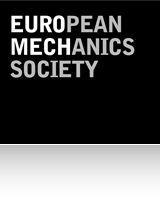655 – Cutting mechanics of soft tissues: Nonlinear fracture and contact mechanics
Chairperson:
Michele Terzano
Institute of Biomechanics,
Graz University of Technology
Stremayrgasse 16/2,
8010 Graz
Austria
Email: michele.terzano AT tugraz.at
Co-chairperson
Mattia Bacca
The University of British Columbia
Canada
David Labonte
Imperial College London
London, UK
The mechanics of cutting in soft tissues is an area of growing interest due to its wide range of applications in biology, medicine, engineering, and robotics. Despite its widespread importance, progress in the field has been hindered by the inherent complexities of the problem, which are of physical, theoretical, and computational nature. Cutting of soft tissues involves contact and fracture mechanics at large deformations, combined with friction and the inherent dissipative behaviour of biological materials. At the computational level, current modelling techniques have a limited ability to describe large deformations at deep indentation, associated with damage-induced fracture and propagation due to loads applied in the crack-tip region. Additionally, several experimental limitations exist, including the lack of scalable and reliable methods to quantify the displacement field under deep indentation and during crack initiation and propagation.
This colloquium aims to bring together experts from various fields – applied and fundamental scientists, physicists, engineers, and biologists – to jointly address the aforementioned problems. Different materials and length scales will be targeted, including soft biological tissues such as skin, vascular tissues, tendons and ligaments, muscle tissue, collagenous membranes, protein networks, and cellulose, as well as biomimetic soft materials such as hydrogels. Topics to be discussed include, but are not limited to:
- Theoretical and experimental approaches to fracture mechanics of soft tissues and biomaterials
- Cutting-based mechanical characterisation of soft tissues and biomaterials
- Needle insertion in medicine and robotic surgery
- Cutting and puncture in animals and plants
